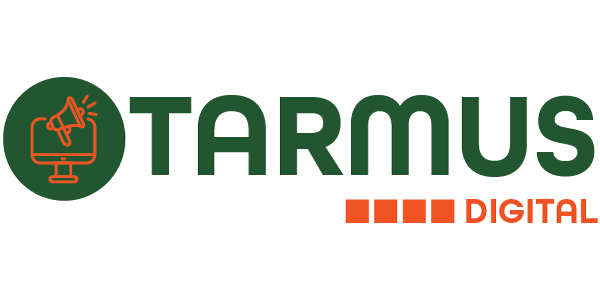Introduction
Are you tired of feeling like your paycheck disappears as soon as it hits your bank account? Budgeting can seem daunting, but it’s a crucial step towards achieving financial freedom. By creating and sticking to a budget, you can control your spending, save more money, and work towards your financial goals. This guide will walk you through practical budgeting tips that can help you save money starting today.
Understanding Your Finances
Assessing Income and Expenses
The first step in creating a budget is understanding where your money comes from and where it goes. List all sources of income, including your salary, side jobs, and other incomes. Then, track your expenses for a month to get a clear picture of your spending habits. This includes everything from rent and groceries to coffee runs and subscription services.
Creating a Financial Snapshot
Once you have a list of your income and expenses, create a financial snapshot. This will allow you to see the big picture of your financial situation. Subtract your entire expenses from your total revenue to see if you have a surplus or deficit. This snapshot will be the foundation for your budget plan.
Setting Financial Goals
Short-term vs. Long-term Goals
Setting clear financial goals is essential for motivation and direction. Short-term goals might include saving for a vacation or paying off a credit card, while long-term goals could be buying a house or retiring early. Having both types of goals will give you something to strive for in the near future and keep you focused on the bigger picture.
SMART Goal Setting
Make sure your objectives are Time-bound, Relevant, Specific, Measurable, and Achievable (SMART). For example, instead of saying “I want to save money,” say “I want to save $500 in the next three months.” This approach makes your goals more attainable and less overwhelming.
Creating a Budget Plan
Types of Budgeting Methods
There are several budgeting methods to choose from, including the 50/30/20 rule, zero-based budgeting, and the envelope system. The 50/30/20 rule allocates 50% of your income to needs, 30% to wants, and 20% to savings and debt repayment. When you use a zero-based budget, each dollar is given a task until your income less your expenses comes to zero. The envelope system uses cash for different spending categories to control spending.
Choosing the Right Budget for You
Choose a budgeting approach that suits your lifestyle and financial goals. If you prefer a straightforward method, the 50/30/20 rule might be ideal. If you need to keep tight control over your expenditure, zero-based budgeting may be more successful. Experiment with various approaches until you find one that suits you.
Tracking Your Spending
Tools for Tracking Expenses
To stick to your budget, you need to track your spending. Use tools like spreadsheets, budgeting apps, or even a pen and paper to record your expenses. Popular budgeting apps include Mint, YNAB (You Need A Budget), and PocketGuard, which can sync with your bank accounts and categorize your transactions automatically.
Benefits of Expense Tracking
Tracking your expenses helps you identify spending patterns and areas where you can cut back. It also holds you accountable and ensures you stick to your budget. Regularly reviewing your expenses allows you to make adjustments as needed and stay on track with your financial goals.
Cutting Unnecessary Expenses
Identifying Non-essential Costs
Review your spending habits to identify non-essential costs. This could be dining out frequently, unused subscriptions, or impulse purchases. Cutting these expenses can help you save money or pay off debt.
Strategies to Reduce Spending
Implement strategies to reduce spending, such as cooking at home instead of eating out, canceling subscriptions you don’t use, and shopping with a list to avoid impulse buys. Look for ways to save on everyday expenses, like using coupons, buying generic brands, and taking advantage of sales and discounts.
Saving on Utilities
Tips to Lower Energy Bills
Lowering your utility bills is an easy way to save money. Turn off lights when not in use, disconnect electronic devices, and utilise energy-efficient equipment. Consider installing a programmable thermostat to reduce heating and cooling costs. Also, sealing drafts around windows and doors can help maintain your home’s temperature and lower your energy usage.
Water-Saving Techniques
Save on water bills by fixing leaks, installing low-flow fixtures, and running full loads in the dishwasher and washing machine. Taking shorter showers and turning off the tap while brushing your teeth can also make a significant difference.
Smart Grocery Shopping
Planning Your Meals
Meal planning can help you save money and avoid food waste. Plan your meals for the week, make a grocery list, and stick to it. This way, you only buy what you need and avoid unnecessary purchases.
Buying in Bulk and Using Coupons
Non-perishable commodities such as rice, pasta, and canned goods can be purchased in bulk for a discount. Use coupons and take advantage of loyalty programs to get discounts on groceries. Many stores offer digital coupons that can be loaded onto your loyalty card for easy savings.
Transportation Savings
Using Public Transit
Using public transportation can save money on gas, parking, and car maintenance. If you live in an area with reliable transit options, consider using them for your daily commute or running errands.
Carpooling and Ride-sharing
Carpooling with coworkers or friends can reduce your transportation costs. Ride-sharing services like Uber and Lyft offer carpool options that can also save you money compared to solo rides. Additionally, sharing rides is more environmentally beneficial.
Entertainment on a Budget
Free and Low-cost Activities
Look for free or low-cost entertainment in your area. Many cities offer free concerts, outdoor movies, and community events. Parks, libraries, and museums often have free admission days or discounted rates.
Making the Most of Subscriptions
If you have subscriptions to streaming services or other entertainment platforms, make sure you’re using them. Share subscriptions with relatives or friends to split the cost. Also, regularly review your subscriptions and cancel any you no longer use.
Effective Debt Management
Prioritizing Debt Repayment
Prioritize paying off high-interest debt, such as credit card balances, to save on interest payments. Consider using the snowball method (paying off the smallest debts first) or the avalanche method (paying off the highest interest debts first) to manage your debt repayment.
Consolidating Debt
Debt consolidation can simplify your payments while potentially lowering your interest rates. Look into options like personal loans, balance transfer credit cards, or home equity loans to consolidate multiple debts into one manageable payment.
Building an Emergency Fund
Importance of an Emergency Fund
An emergency fund is crucial for financial stability. It provides a safety net for unforeseen expenses such as medical bills, car repairs, or job loss. Set up three to six months’ worth of living expenses in your emergency fund.
How to Start Saving
Start by setting aside a small amount each month until you reach your emergency fund goal. Consider automating your savings to make things easier. Even small contributions can add up over time and provide peace of mind.
Investing Wisely
Basics of Investing
Investing can help grow your wealth over time. Understand the basics of investing, including different types of investments like stocks, bonds, and mutual funds. Diversify your investments to reduce risk.
Low-risk Investment Options
If you’re new to investing or risk-averse, consider low-risk options like savings accounts, certificates of deposit (CDs), or government bonds. These investments generate lower returns but are generally safer.
Living Below Your Means
Adjusting Your Lifestyle
Living below your means involves spending less than you earn and prioritizing savings. This might require adjusting your lifestyle, such as downsizing your home, driving an older car, or cutting back on discretionary spending.
Benefits of Minimalism
Practicing simplicity can help you save money and relieve stress. By focusing on what truly matters and eliminating excess, you can simplify your life and achieve financial freedom more quickly.
Reviewing and Adjusting Your Budget
Regular Financial Check-ins
To keep your budget functional, you must evaluate it on a regular basis. Set aside time each month to go over your income, expenses, and progress towards your financial goals. Make necessary adjustments to stay on target.
Adapting to Life Changes
Life changes, such as a new job, a move, or starting a family, can impact your budget. Prepare to adjust your budget to reflect these adjustments. Flexibility is key to maintaining financial stability during different life stages.
Conclusion
Budgeting is a strong tool for gaining control of your finances and achieving your financial goals. By understanding your finances, setting clear goals, and creating a realistic budget, you can start saving money today. Remember that consistency and regular evaluation are essential components of successful budgeting. Start with small steps, and you’ll be amazed at how quickly you can see results.
FAQs
- What is the 50/30/20 rule in budgeting?
- The 50/30/20 rule is a budgeting method that allocates 50% of your income to needs, 30% to wants, and 20% to savings and debt repayment.
- How can I save money with a low income?
- Start by tracking your expenses, cutting unnecessary costs, and setting small, achievable savings goals. Every little bit helps, and over time, these savings can accumulate.
- What are some good apps for budgeting?
- YNAB (You Need A Budget), PocketGuard, and Mint are a few well-known budgeting applications. These apps can sync with your bank accounts and help you track your spending and manage your budget.
- How often should I review my budget?
- It is a good idea to review your budget at least once per month. Regular check-ins allow you to stay on track and make required adjustments.
- Can I still have fun while sticking to a budget?
- Absolutely! Look for free or low-cost activities, take advantage of discounts, and make the most of your subscriptions. With a little imagination, you can enjoy life without breaking the bank.

